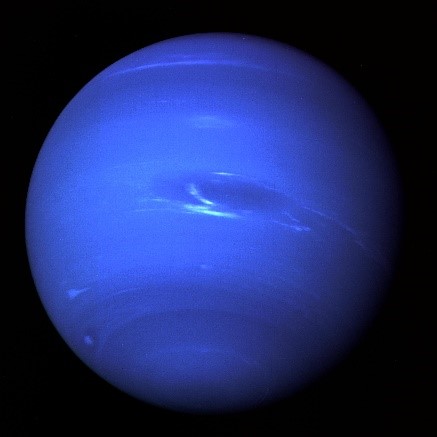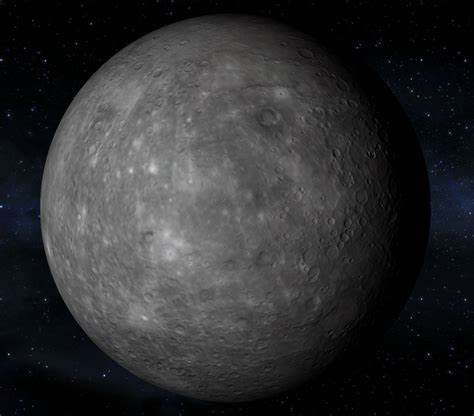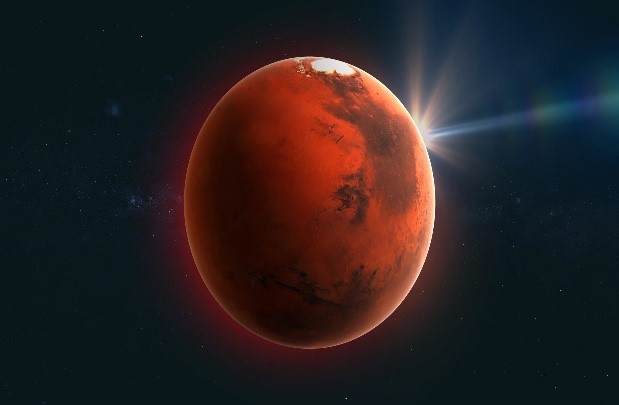Visibility Date : 10 Dec. 2022
The smallest and nearest planet to the Sun in the Solar System is Mercury. Mercury is 61.33 million kilo-meters from the Sun, and it takes sunlight 3.2 minutes to reach Mercury from the Sun during its 87.97 Earth-day orbit. Mercury has a 4.879 km diameter and a radius of 2.439 km, or 1516 mi. Mercury’s orbital eccentricity is the highest of any known planet in the Solar System, although its axis has the least tilt of any planet in the Solar System, at around 130 degrees. There are no known satellites or ring systems orbiting Mercury.
Rise: 07:44 am Set: 18:03 pm
- Right Ascension: 18h 20m 34.2s
- Declination: -25° 40’ 41.1”
- Magnitude: -0.61
- Altitude: 37°
- Constellation: sgr
Visibility
Recently, Mercury underwent a superior solar conjunction and passed behind the Sun. It is not visible from Patna since it rises to its maximum position during the day and sinks to no more than 7° above the horizon at night.
The second planet from the Sun is Venus. It is sometimes referred to as Earth’s “twin” or “sister” planet because it is nearly as big and comparable in makeup. At a distance of 108.2 million km/67.24 mi or 0.7 AU from the Sun, Venus is the second-closest planet, receiving the sun’s light in 6 minutes. Venus is somewhat smaller than Earth, with a radius of 6.051 km (3.760 miles) and a diameter of 12.104 km (7.521 miles).
Rise: 07:19 am Set: 17:45 pm
- Right Ascension: 17h 59m 13.4s
- Declination: -24° 10’ 13.1”
- Magnitude: -3.90
- Altitude: 40°
- Constellation: sgr
Visibility
Recently, Venus and the Sun were in superb solar conjunction. It is not visible from Patna since it rises to its maximum position during the day and sinks to no more than 4° above the horizon at night.
The second-smallest planet with a thin atmosphere is Mars, which is the fourth planet from the Sun. Mars is located 86.08 million kilometres (km) from Earth and 227.9 million kilometres (km) from the Sun, or 1.5 AU. The travel time of sunlight reaching Mars is around 13 minutes. More over half the size of Earth, or 6,779 km, is the diameter of Mars. Phobos and Deimos are the names of Mars’ two moons.
Rise: 16:31 pm Set: 06:19 am
- Right Ascension: 04h 53m 41.8s
- Declination: 24° 56’ 45.3”
- Magnitude: -1.96
- Altitude: -39°
- Constellation: tau
Visibility
Currently a morning object, Mars is on the verge of opposition. It is visible from Patna between 17:14 and 05:38. When it reaches an altitude of 7° above your north-eastern horizon at 17:14, it will become visible. It will rise 89° above your southern horizon at 23:26, when it will be at its highest point in the sky. Around 05:38, when it drops below 7° above your northwest horizon, it will become unavailable.
The largest planet in the Solar System, Jupiter, is the fifth planet from the Sun. Jupiter is 5.2 astronomical units away from the Sun from an average distance of 484 million miles (778 million km), and it is 646.01 million km away from Earth, which is equal to 4.309657 astronomical units. With a gravity of 24.79 m/s2, the gas giant is slightly denser than Earth. It is 11 times wider than Earth and has an equatorial diameter of around 143,000 km (88,900 miles).
Rise: 12:31 pm Set: 00:30 am
- Right Ascension: 23h 58m 18.3s
- Declination: -1° 41’ 24.5”
- Magnitude: -2.50
- Altitude: -1°
- Constellation: psc
Visibility
Jupiter is presently a fading early-evening object as evening twilight approaches. As dusk gives way to night, it is visible from Patna in the evening sky, becoming accessible around 17:14 (IST), 57° above your south-eastern horizon. At 18:30, when the sun is 62° above your southern horizon, it will then reach its greatest position in the sky. Up until 23:51, when it dips below 7° over your western horizon, it will still be visible.
The second-largest planet in the Solar System after Jupiter, Saturn is located six planets from the Sun. It is located about 1.4 billion kilometres (886,000 miles) from the Sun. Its interior is presumably made up of a core of rock and iron-nickel (silicon and oxygen compounds). Being around ten times the diameter of Earth, Saturn is a massive object that is simple to overlook. The planet just dwarfs its retinue of moons with a diameter of around 72,400 miles (116,500 km). Of all the planets, it has the lowest density. The planet would float if placed on it because it is lighter than water. Saturn’s surface area is 83 times larger than Earth’s and it is 1.4756 billion kilometres away from Earth. With 82 verified moons, Saturn is the King of the Moons. There may be more than that.
Rise: 10:33 am Set: 21:36 pm
- Right Ascension: 21h 31m 58.7s
- Declination: -15° 46’ 41.0”
- Magnitude: 0.82
- Altitude: 17°
- Constellation: cap
Visibility
Currently fading into evening dusk, Saturn is a morning object. As dusk gives way to night, it will become visible from Patna around 17:29 (IST), 43° above your south-western horizon. Then, as it descends into the horizon, it will set at 21:35.
The seventh planet from the Sun is Uranus. The planet was the first to be located using a telescope. Uranus’ discoverer intended for it to be known as Georgium Sidus. Uranus is 19.8 astronomical units from the Sun, about 1.8 billion miles (2.9 billion kilometres), on average. Uranus is about 2.7958 billion kilometres (18.693443 astronomical units) away from Earth. Uranus has a diameter of around 31,000 miles (50,000 kilometres), making it roughly four times as large as Earth. Its volume is about 63 times larger than Earth’s, meaning that 63 Earths can fit inside it. Both uranus and Neptune are ice giant planets.
Rise: 14:49 pm Set: 03:58 am
- Right Ascension: 02h 52m 09.1s
- Declination: 16° 05’ 60.0”
- Magnitude: 5.68
- Altitude: -34°
- Constellation: Ari
Visibility
Recently, Uranus overcame opposition. It can be seen from Patna in the evening sky; it becomes visible around 17:57 (IST), 40° above your eastern horizon as dusk gives way to night. At 21:24, 80° above your southern horizon, it will then reach its greatest height in the sky. Up until 02:18, when it drops below 21° over your western horizon, it will still be visible.
The furthest known planet in the Solar System, Neptune is located eight planets from the Sun. It ranks third in terms of mass, is the third densest giant planet, and is the fourth largest planet in the Solar System in terms of diameter. Its mass is somewhat greater than that of its close neighbour Uranus and is 17 times that of the Earth. It is the smallest of the gas giant. Neptune is typically located 2.703.4 billion miles (4.40738 billion km) or 30 AUs from the Sun and 2.703.4 billion miles (4.4004 billion km) or 29.09 AUs from Neptune to Earth. Neptune is the smallest ice giant, weighing only 1.024 x 1026 kg, yet it has the highest density of all the gas giants, at 1.64 g/cm3.
Rise: 12:11 pm Set: 00:00 am
- Right Ascension: 23h 33m 45.1s
- Declination: -4° 08’ 26.1”
- Magnitude: 7.75
- Altitude: -3°
- Constellation: aqr
Visiblilty
The early evening object neptune is rapidly fading into the evening twilight. It is visible in the evening sky from Patna, becoming visible around 17:57 (IST), 60° above the southern horizon as dusk gives way to night. At 18:06, 60° above your southern horizon, it will then reach its greatest height in the sky. When it drops below 21° above your western horizon at 22:19, it will no longer be visible.
NEPTUNE

The sole natural satellite of Earth is the Moon. It ranks as the solar system’s fifth-largest satellite. Our planet’s wobble is lessened and our climate is moderated by the moon’s existence. The Moon is located around 240,000 miles (385,000 km) from Earth, and it possesses a very thin atmosphere known as the exosphere. The moon measures 3,474.8 kilometres in diameter. Distance from sun 147.70 million km.
Rise: 17:46 pm Set: 08:13 am
- Right Ascension: 06h 48m 12.8s
- Declination: -26° 40’ 58.2”
- Magnitude: -12.03
- Altitude: -34°
- Constellation: tau
Visibility
The moon, which is 17 days old, is waning gibbous and on the verge of the last quarter. It rises at a height of 5° above your north-eastern horizon at 18:28 and becomes visible from Patna in the morning sky. The object will then rise 88 degrees above your northern horizon at 00:59. Around 06:06, at a height of 24° above your western horizon, it will be lost to dawn twilight.







